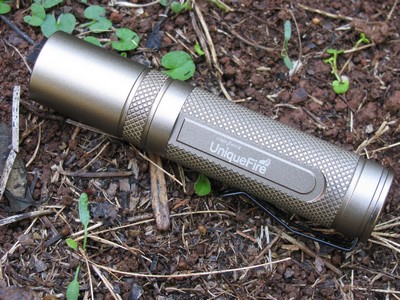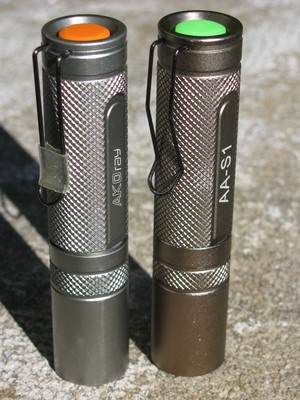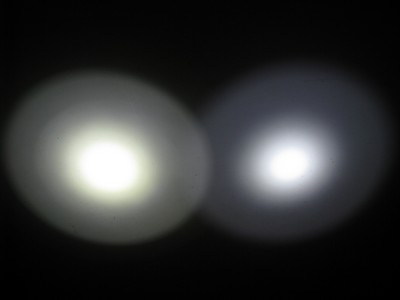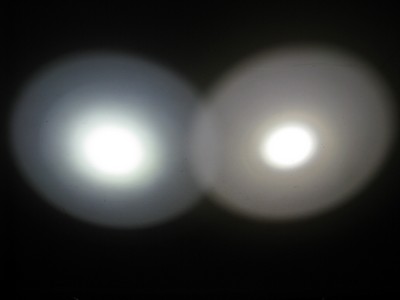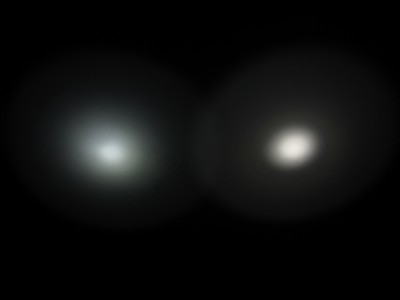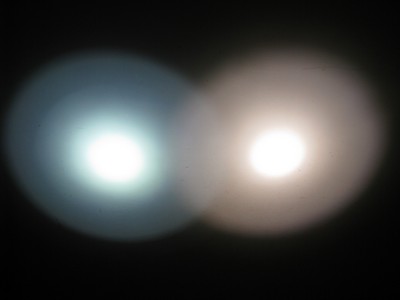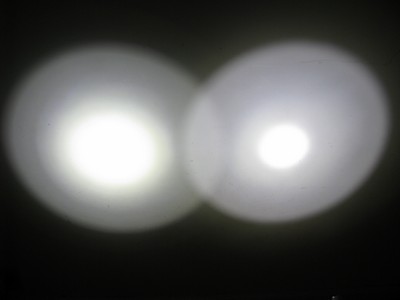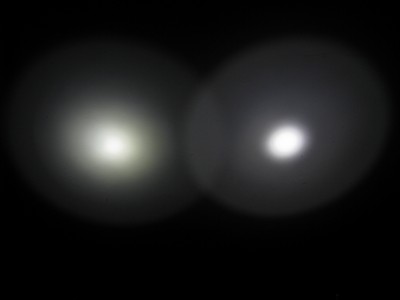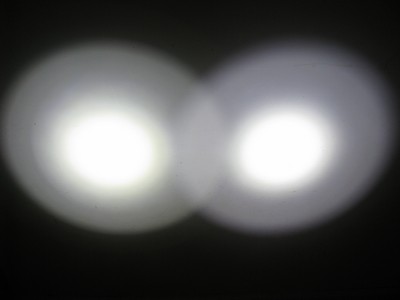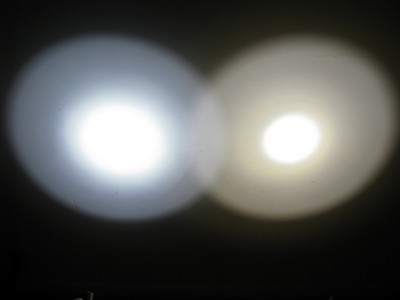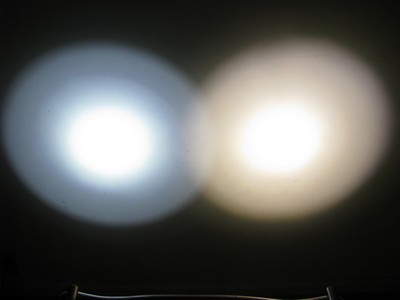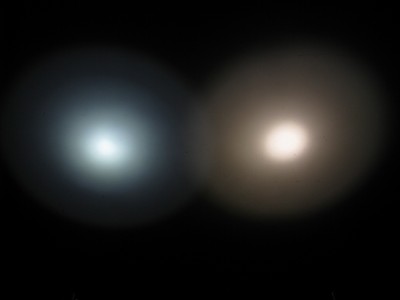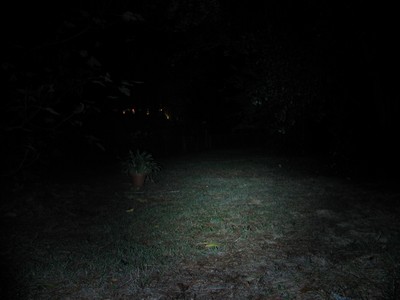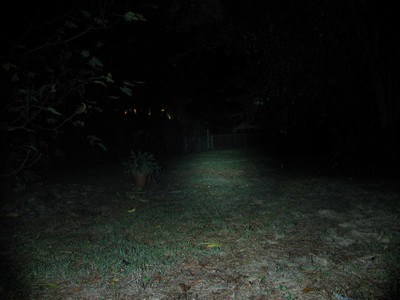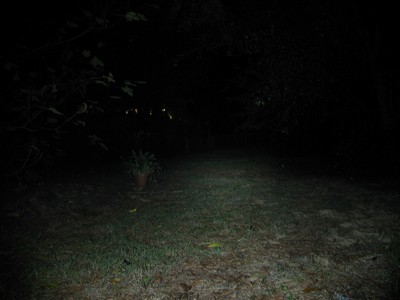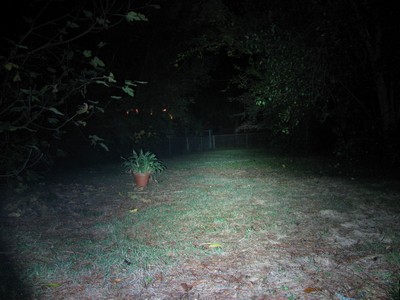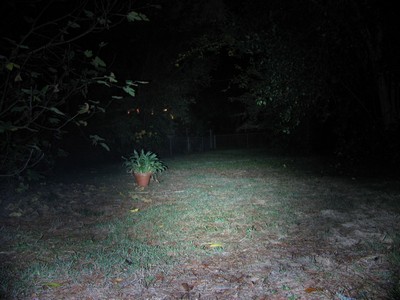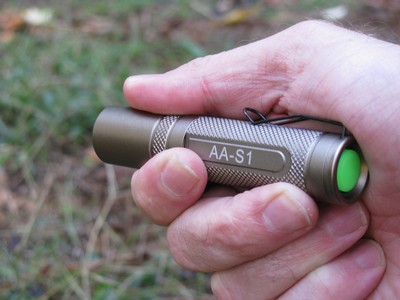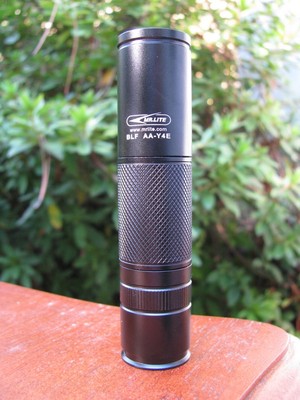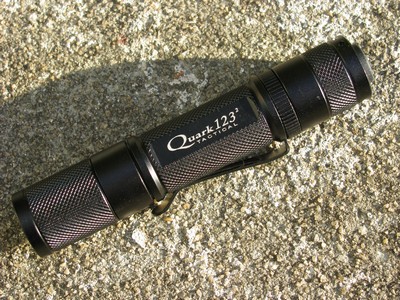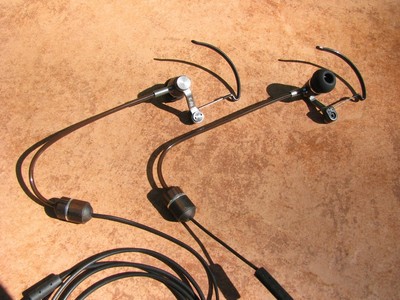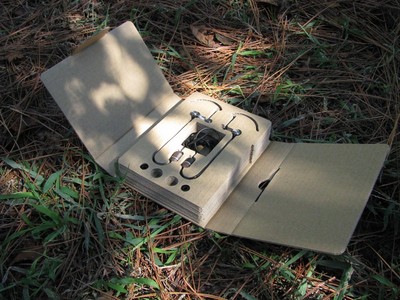Uniquefire AA-S1 Osram
Summary:
| Battery: | AA/14500 li-ion |
| Switch: | Reverse clicky |
| Modes: | 1 |
| LED Type: | Osram |
| Lens: | Glass |
| Tailstands: | Yes |
| Price Paid: | $9.93 |
| From: | DealExtreme |
| Date Ordered: | 22 Aug 2010 |
Pros:
- Very bright
- Well made
- Looks good
- Cheap
Cons:
- Only 1 mode
- Spindly clip
A lot of people already have this light, and there are already good reviews of it at BLF by sb56637 and on Jayki by old4570 and Don. I bought the light based on those positive reviews, because I like the form of the AKOray K-106, and I didn't have any lights yet with an Osram LED.
Features / Value: 4 out of 5
This is just a 1-mode light, so there isn't much to it, but it is also pretty cheap. It works fine on a AA battery and is quite bright on a 14500 lithium-ion battery. It has a pretty high current draw with either battery but gets hot within a few minutes on a lithium-ion.
The form factor is the same as the 3-mode AKOray K-106 (see my review) or the 5-mode Trustfire F20 (see review by sb56637). It's a nicely knurled cylinder with a thin tail piece and dual o-rings on the head. They all have a wire clip that seems a little flimsy but keeps the light from rolling. The clip on my AA-S1 seems flimsier than the one on the K-106 and also seems to be a little malformed when it was bent. I didn't notice this until I unscrewed the tail and took it off, but it wasn't easy to get back on.
The finish of the AKOray is a silvery green while the Uniquefire has more of a bronze color. The picture below (all pictures can be clicked for a larger version) shows them next to each other, with the AKOray K-106 on the left and the Uniquefire AA-S1 on the right:
I was surprised how small the Osram LED is, much smaller than the die on my different Cree lights. I guess it is mounted on plastic because there was no isolator disk over the LED like you need on Cree LED's to keep the aluminum reflector from shorting out the LED. It definitely looks a little different and the yellow die itself has the tell-tale corner etch on the die (you may have to click the image for a bigger version to see it):
Build Quality: 4 out of 5
Build quality seems pretty decent except for the clip. The reverse clicky works about right and the big square threads are very very smooth. Unlike the AKOray, the threads are not anodized, but I don't think that really matters. Most of my lights have bare threads at the head for better electrical contact. There was some kind of sticky lube on the threads and o-rings, which I will wipe off and replace. Still, at least they are trying. The lens was a little dirty, but there were no burrs or metal shavings. The anodizing and finish are pretty much perfect. There are two-orings at the head which seem to work fine and a single thinner one in the tail.
There is a glow-in-the-dark o-ring in the head between the reflector and lens that gives a neat effect after you turn the light off. The Aurora SH-035 and Trustfire XP-E F23 have this too.
Here is a comparison of threads on different lights. From left to right are the Fenix L1D, AKOray K-106, Uniqufire AA-S1, and Aurora SH-035. I like the big square threads, but the quality of the Fenix threads is probably higher. The Aurora threads are awful, so short that it doesn't even take a full turn of the head to fully tighten the light, but so far they have held up.
Battery Life:***
Battery life is not the strong suit of this light, but it is better than I thought it would be. With a 2000mAh NiMH Eneloop I got almost an hour of light and on a Trustfire Flame 14500 I got 35 minutes before the battery measured below 3.6V at rest. Here are the numbers. Here are numbers where I would let the light run and then periodically take the battery out to measure its voltage and take a reading of the tailcap current.
On a 2000 mAh NiMH eneloope AA cell:
| Time (hr:min) | Voltage (V) | Current (mA) |
| 0:00 | 1.452 | 2100 |
| 0:10 | 1.299 | 1990 |
| 0:20 | 1.257 | 1960 |
| 0:30 | 1.241 | 1960 |
| 0:40 | 1.222 | 1930 |
| 0:50 | 1.169 | 1930 |
| 0.963 | 430 |
On a 900mAh Trustfire flame 14500 lithium ion battery:
| Time (hr:min) | Voltage (V) | Current (mA) |
| 0:00 | 4.20 | 1480 |
| 0:05 | 4.00 | 1320 |
| 0:10 | 3.90 | 1170 |
| 0:15 | 3.83 | 1060 |
| 0:20 | 3.76 | 1020 |
| 0:25 | 3.71 | 1040 |
| 0:30 | 3.67 | 1050 |
| 0:35 | 3.36 | 1200 |
With the current going down with the voltage, there doesn't appear to be any regulation at first. But below 3.8V the current draw goes up as the voltage drops, indicating some kind of boost regulation at work. Don's review has a runtime graph of the output which drops off some at first and stays pretty steady before trailing off. I was surprised to get 35 minutes out of this light and battery. The light was very warm after 5 minutes and hot at 10 minutes. I did not notice the LED shifting to blue at any time so I think the LED can handle it.
Light Output: 5 out of 5
I am very happy with the Osram LED. It isn't quite a neutral tint, but it isn't a cool blue either. Instead it seems just a little greenish. Not bad though. The beam itself is nice with a undefined hotspot fading as it goes outward. The reflector is orange peel and I wonder what it would look like with a smooth one. It certainly isn't as ringy as some Cree LED's, maybe a little more like a Cree XP-G.
Here are some indoor shots comparing the light to some others in my collection. First I will compare it to other lights using an AA battery. First up is the Uniquefire AA-S1 against the AKOray K-106, though I should point out that my AKOray has been modified with a XP-G R5 LED but the original 3-mode driver. You would think the R5 would be really bright, but really the AKOray has always been an underachiever on brightness, even with the upgraded LED. All of the pictures are taken with the lights on High and 50cm from the wall. The camera is set to ISO 100 and I vary the exposure to show the hotspot. Here are the lights at 1/25 second exposure. The AA-S1 is always on the left and here you can see it has a more neutral tint than the cooler K-106.
Now faded to 1/200th second:
Now at 1/1600th second to compare the hotspots. I have to give the advantage to the AA-S1.
Now here is the AA-S1 up against my Fenix L1D on NiMH which Fenix claims should put out 120 lumens. The Fenix has a Cree XR-E Q5, with a slightly neutral tint to it. The camera is doing white balance corrections, so now it shows the AA-S1 as bluer than in the pictures above.
Now at 1/200th second:
Now at 1/1600th second. The edge barely goes to the Fenix, though the brighter spill of the AA-S1 might give it a few more lumens overall:
Last comparison on a NiMH battery is my modified Aurora SH-035 which has a Cree XP-G R4 neutral LED and a 1000mA NANJG 112A driver set to 2 modes (here on High). Now the AA-S1 looks quite cool, but that's more the white balance correction than anything. 1/25th second:
Now at 1/200th second:
At 1/1600th second. The AA-S1 is holding its own here against a well-driven high binned Cree.
Okay, now I'll do some comparisons against lights using lithium-ion batteries. The output really goes up with these higher voltage batteries. First up is a Uniquefire S10 with a Cree XR-E R2 LED modified to be driven directly by the battery after the driver burned out. This XR-E is really overdriven with all of the power going to the LED:
At 1/200th second. The S10 has a better-defined more intense hotspot:
At 1/1600th second:
I know this is a lot of pictures of beams for a 1-mode light, but what the heck. Maybe you have one of these lights or something similar. Next up is the AKOray K-106 which has been modified with the Cree XP-G R5 cool white LED:
at 1/200th second:
And at 1/1600th second. Again I think the AA-S1 wins out.
Now for the Fenix L1D. The Fenix is not designed to be run on a lithium-ion cell and loses all of its modes if you try it. But the brighness probably goes up to 180 lumens or more from the XR-E Q5 LED. And the AA-S1 is right up there with it.
1/1600th second:
Lastly, the highly modified Aurora SH-035:
Now it's time to take the lights outdoors and test them on NiMH and Li-ion batteries. The exposure is 3.2 seconds to try and get pictures that look like what it looks like in person. The potted plant is 25 feet away and the lights are aimed at the fence posts 120 feet away. First I took pictures of the different lights on NiMH batteries:
First the Uniquefire AA-S1. I don't think there is a question that it is the brightest of the bunch:
Now the AKOray, which is pretty awful, even with the upgraded LED (no, it's not on Medium):
Now the Fenix L1D:
And finally the modified Aurora SH-035 with XP-G R4:
Now I'll put a blue Trustfire 900mAh lithium-ion battery in each one, starting with the AA-S1:
Now the direct drive Uniquefire S10 with XR-E R2. A little disappointing:
Now the AKOray K-106 with XP-G R5, no throw to speak of:
Now the Fenix L1D on Li-ion:
And finally the Aurora SH-035 with XP-G R4 on li-ion, probably a little more light than the AA-S1 but not much throw:
Summary: 5 out of 5
This is an impressive light and it makes me wonder why Osram isn't a more popular choice for LED's in flashlights. It is my brightest light on a single AA NiMH battery and is right at the top of my lights running from a 14500 lithium-ion battery. The quality of the Uniquefire AA-S1 body is very good except for the spindly clip. If this thing had a low of about 10 lumens on it, it would be a fantastic light even if it drove the cost up $5 or so. As it is, the utility of a 1-mode light just isn't that much for me. I like being able to back off of the maximum brightness when I need to see something a little closer. And I also feel like if they are going to make 1-mode lights, they could at least put a forward clicky in them for momentary on, but I know the budget companies don't ever do forward clickies. Also the forward clicky mechanism is usually longer and I don't think that could be accommodated in this body or at best would prevent the light from tailstanding.
